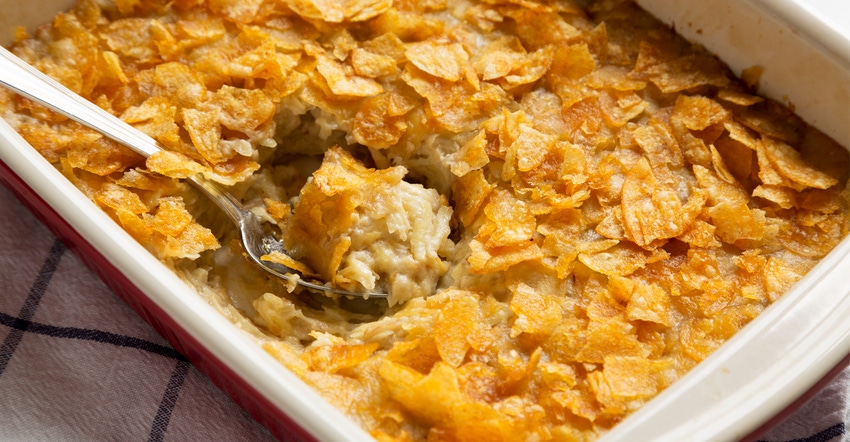April 15, 2022

Hello, fellow Gen Xers. Let’s have a chat, shall we?
Now I know that our generation is that sandwich generation that rarely gets the amount of attention that’s paid to our parents, the boomers, and our younger siblings (or, in some cases, our children) the millennials. And as such, we’ve grown up with — let’s be generous — a certain lack of care for conformity and expectations.
Our generation listened to Curt Cobain and Alabama while on the tractor tilling fields, after all.
We may have grown up scoffing at our parents’ and grandparents’ social norms, but friends, they really do have a place in keeping the fabric of our rural communities connected.
Casseroles
Take for example, the humble condolence or congratulations casserole. Our mothers and grandmothers had no fewer than 50 different casserole recipes they could whip together with 15 minutes, whatever protein was in the freezer, a can of cream of something soup, and shredded cheese.
Neighbor family have a baby? Casserole. Church member’s funeral? Casserole. Neighbor breaks a hip? Casserole.
The only difference was if you put it in a disposable pan or one clearly labeled with your last name.
We thought that was our mothers’ ways of being neighborly. And yes, they were. But they were also their subtle methods of checking in on neighbors.
“How’s the baby doing? Are you getting any sleep? How about I take a turn with this cutie and you go get a shower and a nap? It’s no trouble!”
“Fred, I was making supper and silly me — I made too much, and my freezer’s full. Thought I’d drop this off. Marge often said it’s your favorite casserole. She brought us some when I was laid up with that broken foot and left the recipe. Oh, how I miss her.”
We just thought it was a casserole, but it really was their stealth reconnaissance mission to see if that new mother was coping, or if the widower was eating.
Tell a friend
The phone tree was another incredible method of information dissemination that we once scoffed at in our youth as just gossip mills. I remember the joke, “Telephone, telegram, tell Aunt Tessie (or, insert name of the family busybody here).”
In our family, my maternal grandma was the hub of the family phone tree. Back in the days of expensive long distance calls and landlines, that woman could parcel out the bare basics of family news in five minutes or less.
“Uncle Marvin had hip surgery, so send him a card. Nephew Jeremiah’s up for homecoming king, so be sure to put that on the calendar. And cousin Merline could use some prayers, she’s back in the hospital.”
Grandma kept the family address book updated. Today, I have to search through Facebook and hope that the cousin has an account. And that’s for the close cousins — if you asked me about extended family members, I’d be hard-pressed for names.
But Grandma knew them. And by relaying even those small tidbits through the family chain, she kept us connected in a way we took for granted.
Connecting
We Gen Xers may have turned our noses up at conformity. We may roll our eyes at the time those gestures of our parents and grandparents take out of busy days. But look around at what we have in its place today.
We have mental health crises in our rural communities that aren’t being addressed, because no one feels connected to their neighbors enough to ask for help, or offer it when we see the need. When’s the last time we called or dropped by to check in on the widowers or widows down the road to see if they need help with their farm or their household duties?
We have family members so far removed from farming that they have extremely skewed perceptions of what we do out here on the land. But, when’s the last time you spent a weekend afternoon to go visit that extended family? Or invited them to come out to the farm for a picnic or a family potluck?
The generation before us is leaving the future of our community connectivity to us. And we can use Facebook and Twitter to help us connect to our neighbors with chat groups and the like, to be sure. But if we really care for our neighbors and our family, we’ll take the time to connect in person in some form.
Might I suggest a casserole?
You May Also Like




